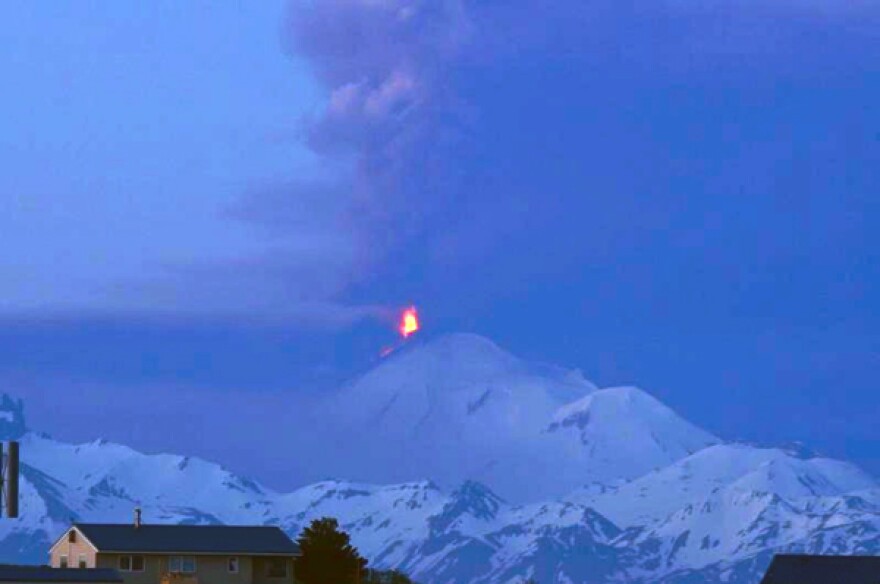Pavlof Volcano is erupting on the Alaska Peninsula, sending a haze of ash out above nearby towns.
The volcano’s ash plume is up to 18,000 to 20,000 feet Tuesday. That’s put local airlines on alert.
PenAir spokeswoman Missy Roberts says the ash hasn’t caused problems for any flights just yet. Planes made it in and out of Sand Point last night and Cold Bay this morning.
"All of our flights are currently on schedule; however, our dispatch and operations continues to monitor the situation on an hourly, if not even more so, basis," she says. "For the safety of our passengers and our operation, we will make changes as needed at that time."
She says they’re looking for changes in the wind that could send ash into the way of PenAir’s planes. The ash is a safety risk and can damage the aircraft.
"Whether it’s hanging out over one of our stations or one of our alternates -- you know, if we have the ability to be able to go around it... if we don’t, we’re certainly not going to go through it," she says. "So those are some of the things we look at again on an hourly basis to make sure it’s safe for everybody."
Right now, Alaska Volcano Observatory scientist Game McGimsey says most of Pavlof’s ash plume is being blown south, out to sea and away from flight paths and towns.
Lower-level winds -- at around 5,000 to 10,000 feet -- are carrying ash west, toward Cold Bay. There haven’t been reports of ashfall yet, but McGimsey says that could change.
"If there is an ashfall today, it would likely occur in Cold Bay and it would be very, very light, a trace amount, which is about 1/32nd of an inch."
The AVO first put Pavlof on watch on Saturday. McGimsey says its activity escalated quickly -- but that’s not unusual for this volcano.
"The onset on Saturday was fairly abrupt and didn’t have much, if any, seismic precursory activity -- we simply saw it on satellite imagery," he says. "And yesterdayabout 3 p.m. was when the seismicity took an abrupt uptick, and that was commensurate with photographs from Cold Bay residents showing the plume had greatly increased in height and intensity."
There was also glowing lava visible from Cold Bay last night -- fountaining out of the volcano’s crater and flowing down its north flank.
McGimsey says there’s no telling how long this eruptive period will last. This time one year ago, Pavlof erupted for several weeks, sending ash up to 28,000 feet and stranding hundreds of air travelers.

